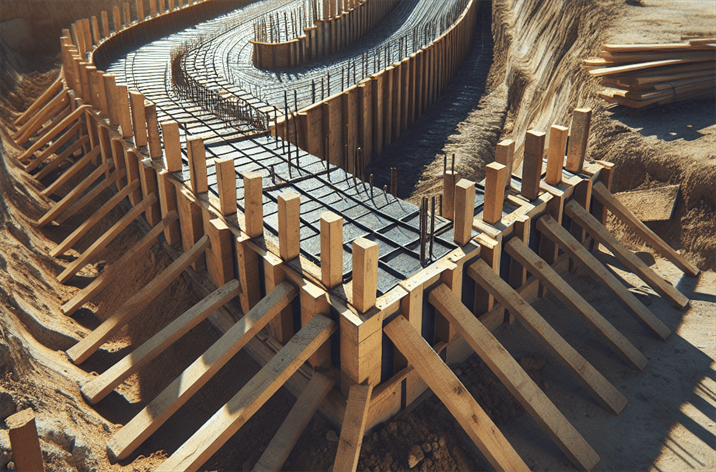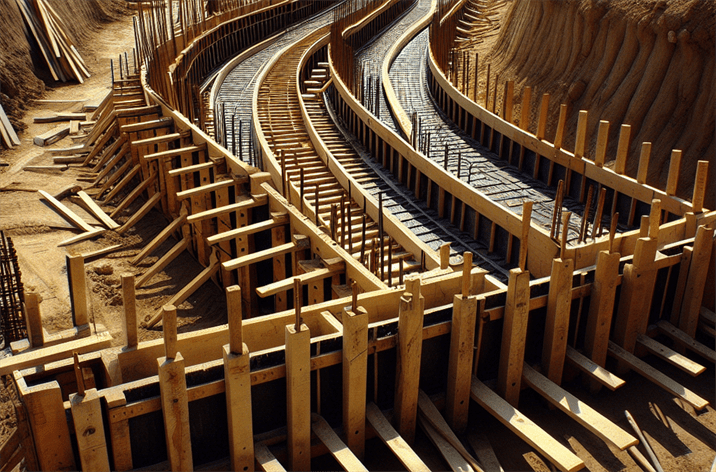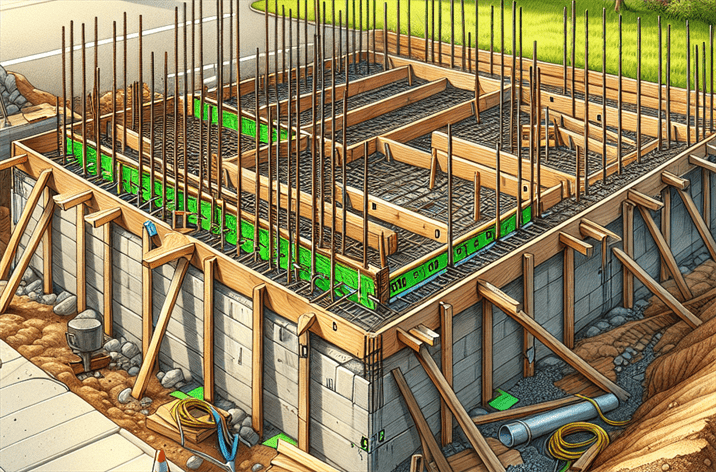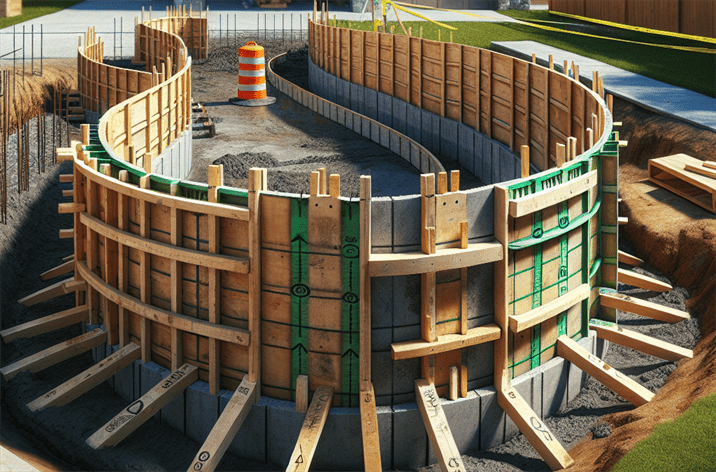Construction Alignment Stakes: Tips for Better Site Organization
Introduction
In the world of construction, precision is paramount. Did you know that misalignment in construction projects can lead to cost overruns of up to 20%? That’s a staggering statistic that underscores the importance of utilizing effective tools to maintain accuracy on site. Among these tools, construction alignment stakes play a crucial role in ensuring that projects stay on track, both literally and figuratively. As the construction industry grows, so does the relevance of alignment tools, which not only enhance site organization but also improve workflow and project outcomes.
Construction alignment stakes are more than just wooden or metal markers; they are essential components that aid in the layout and setup of construction sites. Properly using these stakes can mean the difference between a successful build and costly errors. In this article, we will dive deep into the definition and purpose of construction alignment stakes, explore their benefits and challenges, and provide practical tips for using them effectively.
For a deeper understanding of the essential tools for construction, check out our guide on construction layout stakes.
What are Construction Alignment Stakes?
Definition
Construction alignment stakes are durable markers that are driven into the ground to establish reference points for construction projects. Their primary purpose is to provide a visual guide for builders and surveyors, ensuring that structures are positioned accurately according to the project plans. These stakes can be made from various materials, including wood, metal, or plastic, and are typically used in conjunction with other alignment tools to enhance overall project precision.
Historical Context
Historically, construction alignment stakes have evolved significantly. Early construction projects relied heavily on manual measurements and rudimentary tools, which often led to inaccuracies. With the advent of modern surveying techniques and materials, the use of alignment stakes has become more refined. Today, these tools are integral to almost every project, from small residential builds to large commercial developments.
The Importance of Construction Alignment Stakes
The significance of construction alignment stakes extends beyond mere convenience; they are critical for ensuring the accuracy of construction projects. Without proper alignment, projects can suffer from structural issues, resulting in safety hazards and increased costs.
Construction Alignment Stakes in the Context of Surveying
In land surveying, alignment stakes mark boundaries and critical points on a site. Surveyors use these stakes to transfer measurements from plans onto the ground, creating a precise layout for construction activities. This process is essential for minimizing errors and ensuring that the project adheres to local zoning laws and building codes.
Key Players or Contributors
Various companies and innovations have enhanced the effectiveness of alignment stakes. For instance, advancements in materials science have led to the development of more durable and weather-resistant stakes, which can withstand the rigors of construction sites. Additionally, smart technology integration is beginning to influence how these tools are utilized, with GPS and digital surveying equipment providing even greater accuracy.
For more about the role of construction alignment tools, explore our article on construction boundary markers.

How Do Construction Alignment Stakes Work?
The Mechanics of Construction Alignment Stakes
The effective use of construction alignment stakes involves a series of precise steps:
- Planning: Before placing stakes, it’s crucial to have a well-defined plan that outlines where the stakes should be positioned according to the project specifications.
- Placement: The stakes are driven into the ground at key locations, such as corners and edges of the structure. The height of the stakes should be consistent to allow for accurate measurements.
- Alignment: Using a level or laser tool, builders ensure that the stakes are properly aligned with each other and with the project layout.
- Verification: After placement, the alignment and height of the stakes should be verified to confirm they meet the project’s specifications.
Technological Foundations of Construction Alignment Stakes
The integration of technology has greatly enhanced the functionality of construction alignment stakes. Modern tools like laser levels and total stations work in tandem with these stakes to provide real-time data on alignment and elevation, improving overall accuracy. For example, laser systems can project a beam that helps in aligning multiple stakes simultaneously, reducing the time spent on manual adjustments.
Real-World Applications of Construction Alignment Stakes
Construction alignment stakes are used across various projects, showcasing their versatility and importance:
- Residential Construction: In building homes, stakes help define property boundaries and the layout of structures, ensuring compliance with local regulations.
- Commercial Projects: Large commercial developments require precise layouts to accommodate complex designs, making alignment stakes indispensable.
- Infrastructure Development: In road construction and public works, alignment stakes mark critical points for drainage and grading.
Case Studies/Examples of Construction Alignment Stakes in Action
A notable example of effective use of alignment stakes can be seen in a recent commercial building project. The construction team utilized high-quality wooden stakes to outline the building’s footprint. By implementing laser technology alongside the stakes, they achieved accurate measurements that prevented costly errors down the line.
Benefits and Drawbacks of Construction Alignment Stakes
Benefits:
- Enhanced Accuracy: Proper use of alignment stakes ensures that buildings are constructed exactly as planned.
- Improved Communication: Clearly marked stakes facilitate better communication among team members and subcontractors.
- Cost Efficiency: Reducing errors leads to lower costs associated with rework and delays.
Drawbacks:
- Weather Sensitivity: Wooden stakes can be affected by moisture and decay if not treated properly.
- Labor-Intensive Setup: Proper placement requires skilled labor, which may increase initial project costs.
Practical Tips for Using Construction Alignment Stakes Effectively
Using construction alignment stakes effectively requires planning, technique, and some best practices. Here are some actionable tips to improve site organization:
1. Choose the Right Material
Selecting the appropriate material for alignment stakes is essential. For most construction projects, wooden stakes are preferred due to their cost-effectiveness and availability. However, for projects in wet conditions, durable wooden stakes for construction and farming may be more suitable.
2. Ensure Visibility
To enhance visibility and avoid accidental displacements, consider using brightly colored stakes or adding flags. This is especially important in busy construction environments where multiple teams might be working simultaneously.
3. Regular Maintenance
Inspect the stakes regularly to ensure they remain in place and are not damaged. If a stake becomes loose or damaged, it can lead to significant alignment issues.
4. Utilize Technology
Incorporate modern surveying tools like laser levels and digital measuring devices to complement your alignment stakes. This integration can help achieve greater precision and efficiency.
5. Train Your Team
Ensuring that team members are trained in the proper use of alignment stakes is crucial. Conduct workshops or training sessions to familiarize them with the techniques and tools involved in effective site organization.
6. Document Your Process
Keep thorough records of the stake placements and any adjustments made throughout the project. This documentation can serve as a reference for future projects and can help in troubleshooting if issues arise.
7. Follow Best Practices
Implement best practices when placing and using stakes. This includes ensuring that stakes are driven deep enough to remain stable and that they are aligned according to project specifications.
8. Collaborate with Surveyors
Work closely with surveyors to ensure that the stakes are placed accurately. Their expertise can help guide the process and prevent errors.
Future Trends in Construction Alignment Stakes
As technology continues to advance, the future of construction alignment stakes looks promising. Here are a few trends to watch:
Increased Use of Smart Technology
The integration of smart technology, such as IoT devices and AI, is expected to revolutionize how alignment stakes are used. Smart stakes could provide real-time data on positioning and alignment, automatically adjusting as necessary.
Eco-Friendly Materials
Sustainability is becoming a focal point in construction. The industry may see a shift toward eco-friendly materials for alignment stakes, such as recycled plastics or sustainably sourced wood.
Enhanced Durability
Innovations in materials science may lead to the development of alignment stakes that are more durable and resistant to environmental factors, reducing the need for frequent replacements.
Conclusion
In conclusion, construction alignment stakes are vital tools in the construction industry, ensuring accuracy and efficiency in project execution. By understanding their purpose, benefits, and best practices for use, construction professionals can significantly improve site organization and reduce potential errors. As the industry evolves, embracing new technologies and sustainable practices will only enhance the effectiveness of these essential tools.
For more insights on construction tools, check out our article on the benefits of using stakes and lath in construction. By investing in knowledge and resources, you can ensure that your next project is a resounding success.
Resource Links:
1. Construction Executive – Discusses the significance of alignment stakes in construction and tips for effective site organization.
2. JLC Online – Provides an overview of construction staking methods and best practices for site layout.
3. The Balance Small Business – Offers guidance on utilizing stakes and string lines for improved construction site organization.














